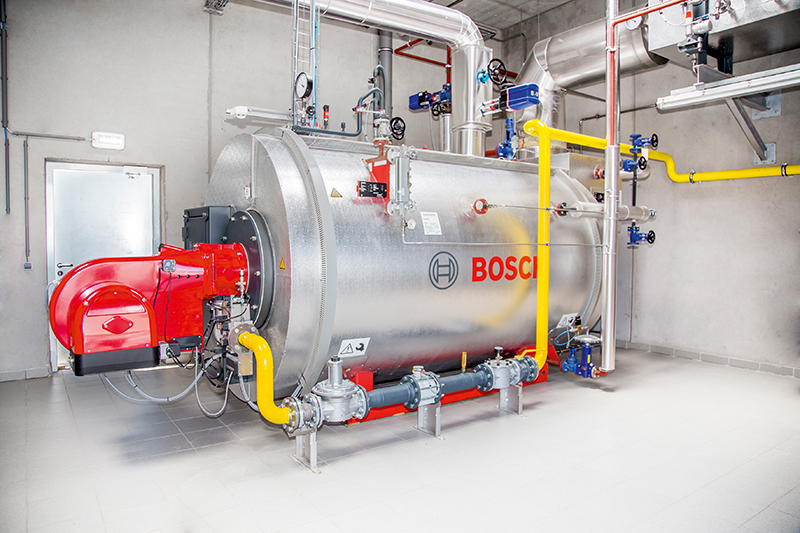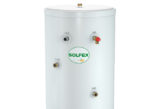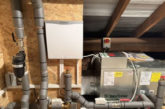
Pete Mills, Commercial Technical Operations Manager at Bosch Commercial & Industrial, outlines why a hybrid plant room is better for heat networks.
Heat networks are fast-becoming the go-to option for many local authorities, housing associations and developers thanks to their strong credentials of providing heat and hot water in a high-efficiency, low carbon way.
As the UK moves towards a Net Zero future, the role of heat networks will no doubt become more prominent. Many believe that heat pumps could and should be the sole heat source for heat network projects, particularly as we see the decline of CHP use. However, this may actually limit a heat network’s potential.
Not just because heat pumps are not at their most efficient during the colder months, but also as it restricts the possibility of future, net low carbon fuels and increase flexibility. There are alternatives which ensure heat networks have the best of both worlds.
The hybrid option
A future-proof solution is a hybrid between heat pumps and peak-load boilers. These could deliver savings on both carbon emissions and capital costs.
Hybrid solutions between heat pumps and peak load boilers offer a practical option to keeping capital costs under control, while still delivering significant carbon savings.
Experience has shown that with around 40 to 60% of peak demand covered by heat pumps, over 80% of the kWs can typically be provided through heat pumps. Heat networks typically operate below 25% of their peak demand for over half of the year, which is well suited to a heat pump. On the small number of days each year when temperatures are coldest, demand can be taken up by the peak-load boilers.
This makes even more sense where air source heat pumps are used, since it is on these days with low external temperatures that their operating efficiency will be at its lowest. Heat generating plant redundancy is also not optimised by having expensive heat pumps sat waiting to kick in on the rare occasion that another heat pump goes down. Far better to meet this need through lower cost boilers and further reduce capital costs.
Another benefit of including a hybrid system instead of solely heat pump is that it can support further carbon emission reductions in future. One key energy transformation that is looking more likely is the decarbonisation of the gas grid to hydrogen blends and ultimately 100% hydrogen. Coupling that with a heat network’s unique ability to adapt to multiple forms of heat that become available, will result in considerable reduction in carbon emission.
Load shifting
The ability to load shift at peak times may become a valuable attribute of a heat network in the future. Hybrid systems using decarbonised gas would have the flexibility to react to signals from the grid, shifting loads and reducing stress on the local system. Add in good quantities of thermal storage and you have even more flexibility at your disposal.
It is no surprise that many cities have already implemented district heating schemes in their regions, which will most likely increase the introduction of them across the country. However, we need to ensure the right technology mix is placed into the plant room to see the full potential on the long road to net zero 2050.
www.bosch-thermotechnology.com/global/en/commercial-industrial/home













